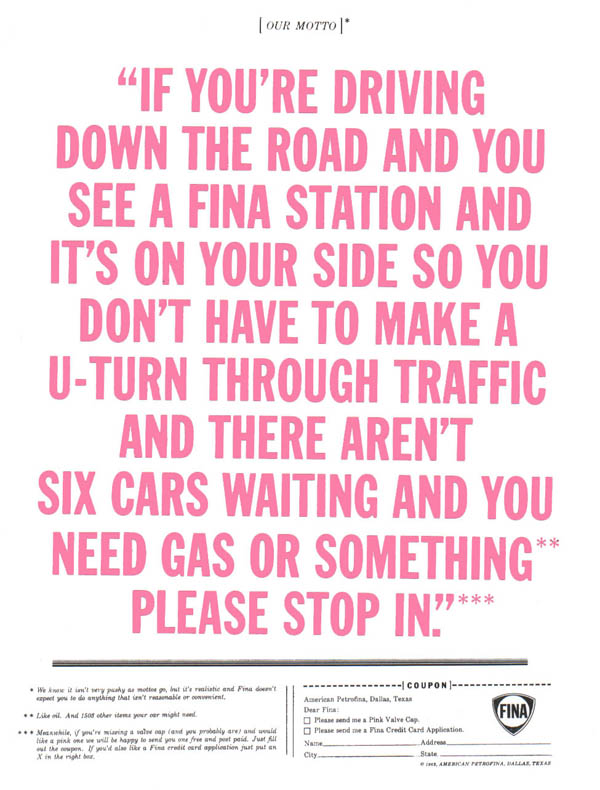When ‘the least likely to be shite’ option is perfect

The word ‘engagement’ gets used a lot by marketers these days – in fact a few new synonyms would be helpful for the digital strategy I’m working on at the moment.
For a lot of brands, creating content that consumers want to engage with is absolutely the right approach, particularly if it’s around a shared passion or topic that people actively want to discuss.
However, it’s easy to forget that in many of the purchasing decisions we make every day, we don’t want to be engaged, we just want to get it done with minimal fuss.
Rory Sutherland has a great piece on his blog about this phenomenon: his argument is that most people make most of their decisions based on minimising risk rather than optimising choice. In other words it’s not about making your brand the best – it’s about being the least likely to be shite. As a consumer, this is the difference between being a ‘maximiser’ and a ‘satisficer’:
“If you are an expert in a field, you are a maximiser. Your car is Teutonic. You listen to relatively obscure Indie music. You wear niche clothes brands, like those funny jeans with a wiggle on them…But most people tend to be maximisers in a few areas only – for most of us it’s simply too much intellectual effort to compete in every field.
Now, here’s the issue. Most people, in most fields of consumption, most of the time are NOT maximisers at all. They are something completely different. They are satisficers. What they are doing is not using insane amounts of mental energy to attempt to optimise every decison. They are instead simply trying to avoid making a decision that is actually bad or which might cause them to look or feel foolist. For those people, good enough generally is.”
Rory Sutherland: ‘Do people in the music industry understand music? And do people in the Advertising industry understand brands?’
This doesn’t mean do nothing. Using compelling content to increase your online visibility and credibility can be a great way of engaging the ‘maximisers’ while also making you seem less risky in the eyes of the ‘satisficers’.
Ultimately, it’s about understanding your different audiences and tailoring messaging accordingly. And as the the Fina ad cleverly acknowledges, it’s worth remembering that most of these people probably don’t care as much about your brand as you do.

